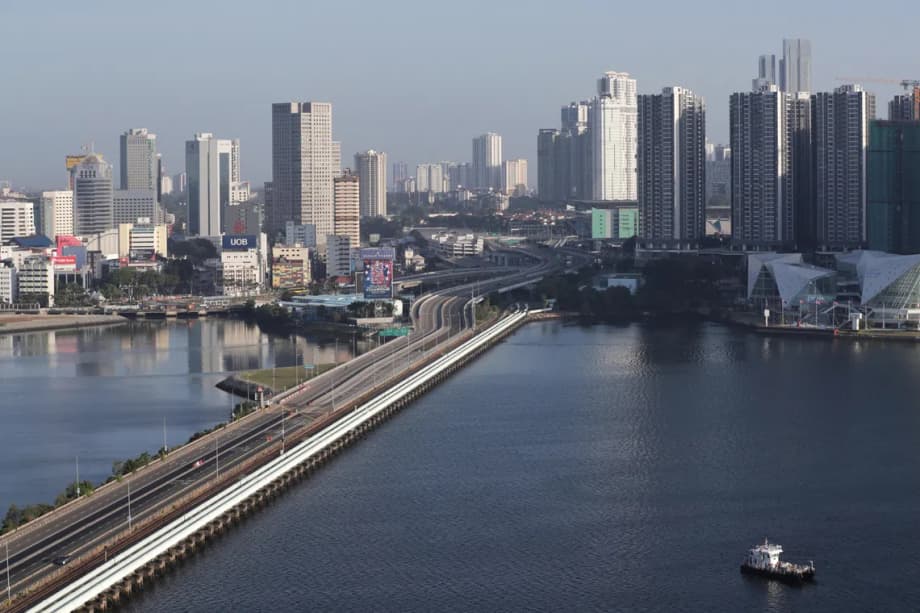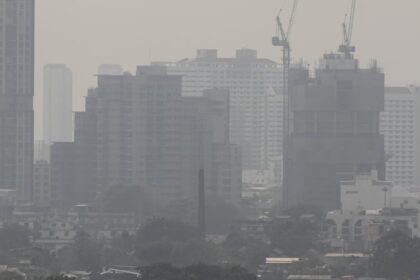Exchange rates and the Causeway paycheck
When Malaysian tour executive Loo Yong Tat converted part of his Singapore salary into ringgit this month, the difference hit home. For much of 2024, remitting S$2,000 would translate to around RM6,800. With the ringgit now around RM3.18 to RM3.20 per Singapore dollar, the same amount is closer to RM6,400. That is roughly RM400 less to cover family bills in Kulai, support an elderly parent, or top up savings. The shift feels like a pay trim, even if his work and hours have not changed.
Millions of Malaysians build their budgets around that conversion. Singapore hosts the largest community of Malaysians abroad, and many in Johor depend on a steady stream of earnings from across the Causeway. A stronger ringgit narrows the gap that has long made working in Singapore attractive, yet the pull of higher wages and career exposure remains powerful.
Workers who have seen cycles over the years point out that the rate still looks good by historical standards. When Mr Loo first took a job in Singapore in 2009, one Singapore dollar bought about RM2.40. The familiar rule of thumb many Malaysians use, the three times multiplier, still holds at today’s levels. The question is how people adjust if the ringgit stays firm, or even pushes below RM3.00 per Singapore dollar.
How strong is the ringgit now
As at mid November, market trackers put 1 Singapore dollar at roughly RM3.18 to RM3.20. Retail rates vary by bank and money changer, but the broad picture is clear. The ringgit has recovered ground from the multi year lows seen when the Singapore dollar bought well above RM3.30. For reference, official interbank readings are available from Bank Negara Malaysia’s exchange rate display at bnm.gov.my.
Context matters. In late 2022, the Singapore dollar touched around RM3.38, which supercharged the value of remittances to Malaysia. Go back to February 2020 and the picture flips, when the Singapore dollar traded near RM2.90. The recent swing toward RM3.20 has unfolded alongside easing United States interest rates, improving growth signals in Malaysia, and expectations of stronger investment inflows. Singapore’s currency is guided by a trade weighted policy framework, while Malaysia runs a managed float. Moves in the United States dollar, regional trade, and capital flows often show up in both currencies.
Does a stronger ringgit reduce the appeal of Singapore wages
Pay gaps still matter more than the latest tick in the rate for many professions. Take software engineering. Salary data cited by industry groups suggests a monthly pay around RM7,900 in Kulai, with a wider range in Kuala Lumpur. In Singapore, similar roles commonly sit around S$6,100. At RM3.18 per Singapore dollar, that is roughly RM19,400 a month, more than twice the average in Kulai and competitive with top tier roles in the Klang Valley. Even after rent, transport, and daily costs in Singapore, the gap often leaves room to save and send money home.
The magnet is not just the paycheck. Exposure to multinational firms, larger project scales, and denser networks in Singapore weigh heavily in career choices, especially for engineers, financial professionals, healthcare staff, and those in tech. Business advocates in southern Johor say this ecosystem pull is hard to match quickly, which is why many Malaysians view the exchange rate as only one part of a larger calculation.
Sentiment across the border is mixed. Some Malaysians working in Singapore feel the ringgit’s rise like a haircut on take home value in Malaysia. Others see the Singapore dollar as steady enough to keep earning there. Members of community groups often cite the three times multiplier as a mental anchor. A drop below RM3.00 per Singapore dollar would challenge that anchor and could push more people to rethink where they work and live.
Costs and the daily commute
Living costs on both sides of the Causeway have climbed in recent years. In Johor Bahru, a simple meal can run from RM10 to RM25 in a cafe, and state level data showed Johor with the highest year on year inflation rate in September 2025 at 2 percent. The arithmetic for a Singapore based worker who supports a family in Johor is tighter when the ringgit strengthens, even if price pressures in Malaysia feel moderate on paper.
Time has a cost as well. Daily commuting between Johor Bahru and Woodlands or Tuas can stretch for hours at peak periods. That stress is a frequent reason some Malaysians consider switching to a job in Johor even at a lower salary, especially if the exchange rate dips toward RM2.80. Avoiding checkpoint congestion and reclaiming family time can outweigh a portion of the currency premium.
Retirement savings add a quieter layer to the calculation. Malaysians employed in Singapore typically do not contribute to the Singapore Central Provident Fund unless they become permanent residents, which raises short term take home pay but reduces structured retirement saving. Working in Malaysia brings employer contributions into the Employees Provident Fund. Many Malaysians manage this trade off by targeting higher earnings in Singapore for several years, building cash savings, then returning to Malaysia to anchor long term retirement plans. The strategy demands discipline and careful budgeting through currency swings.
What would persuade workers to move back
Interviews with workers and employer groups suggest three elements matter most. First, currency stability, not just a brief rally. Many say a ringgit holding below RM3.00 per Singapore dollar for a sustained period would be a strong signal. Second, competitive pay in Malaysia within key growth sectors, backed by clear career paths. Third, confidence that cities like Johor Bahru can support advanced services, engineering, and tech roles at scale without requiring daily cross border travel.
Policy and investment trends could help. Malaysia’s recent push to attract capital into semiconductors, electric mobility, and digital services has lifted expectations for job creation. Johor’s ties with Singapore through the planned special economic zone have already attracted data center operators and advanced manufacturers. If more of those projects translate into well paying roles and supplier ecosystems on the Malaysian side, the incentive to live and work in Johor strengthens.
Employers in Malaysia can also chip away at the gap. Sharper salary bands for high demand skills, training programs linked to global certifications, and clearer promotion ladders make a difference. Flexible models like remote work or split week arrangements for roles that do not require daily presence can reduce commuting strains while keeping access to Singapore markets.
Outlook for 2025 and 2026
Currency projections are never a guarantee, yet many analysts expect the ringgit to hover around RM3.20 to RM3.30 per Singapore dollar through the end of 2025, with a chance of further strength in 2026 if investment inflows hold. A break below RM3.00 would mark a psychological shift for cross border workers. Risks run both ways. A slower path to lower United States interest rates could firm the dollar again, while any growth stumble in the region could sap confidence in Asian currencies. Singapore’s exchange rate policy is designed to keep inflation risks in check, which tends to limit sharp swings in the Singapore dollar’s trade weighted value.
Cross border spending patterns are already adjusting. A firmer ringgit makes shopping and weekend trips to Johor a little less cheap for Singapore residents, which can cool some retail and hospitality traffic. For Malaysians who live in Johor and work in Singapore, the immediate effect is a tighter conversion back to ringgit. Many respond by timing remittances, setting alerts, or keeping a portion of savings in both currencies. Official interbank readings are available daily from Bank Negara Malaysia’s website at bnm.gov.my, which can help with planning.
What to Know
- The ringgit has strengthened to about RM3.18 to RM3.20 per Singapore dollar, trimming the value of remittances for Malaysians earning in Singapore.
- Many workers still find Singapore salaries compelling. A mid career software role around S$6,100 translates to roughly RM19,400 at current rates, far above typical pay in smaller Malaysian cities.
- Johor Bahru living costs and daily commuting time remain major factors. Some workers would accept lower pay in Johor to avoid hours at the checkpoints.
- Community groups and employer associations say a sustained move below RM3.00 per Singapore dollar would be a strong signal that could shift more workers back to Malaysia.
- Malaysia’s push to attract investment in semiconductors, electric mobility, and digital services, plus the Johor Singapore special economic zone, could create the kind of jobs that anchor returns.
- Forecasts point to RM3.20 to RM3.30 per Singapore dollar through late 2025, with potential for more strength in 2026 if investment inflows and growth hold.
- Workers are adapting by adjusting remittance timing, building savings buffers, and weighing retirement planning trade offs between EPF in Malaysia and higher cash pay in Singapore.
- Official exchange rates are published by Bank Negara Malaysia, and tracking them helps cross border workers plan monthly budgets with clearer numbers.












